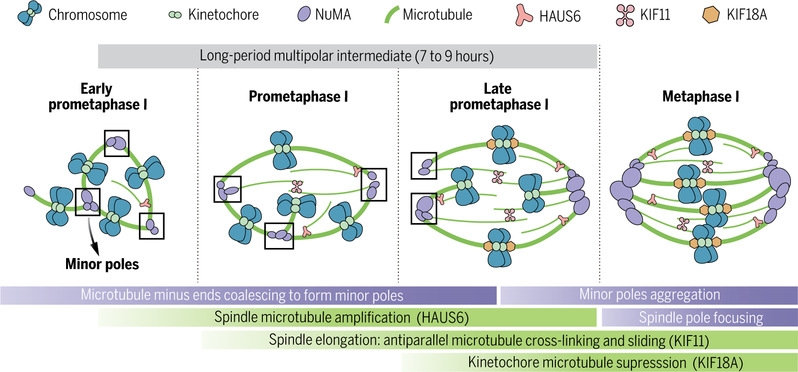In both mitotic and meiotic cells, spindle formation consists of microtubule nucleation and spindle bipolarization. Once the microtubule polymerized, the microtubule mass must transform into a bipolar spindle, and this is defined as spindle bipolarization. Failure of spindle bipolarization leads to monopolar or multipolar spindle formation, resulting in chromosomal instability and aneuploidy in human cells. In contrast to mitotic cells and mouse oocytes, our understanding of spindle bipolarization in human oocytes is very limited. The mechanism through which the human oocyte establishes and maintains spindle bipolarization remains unclear.
We have delineated the process of spindle bipolarization and elucidated the distinct underlying mechanisms in human oocytes. The minus ends of kinetochore-nucleated microtubules are coalesced to form multiple minor poles. These minor poles contribute to the generation of multipolar intermediates, which is a typical state in spindle bipolarization. After that, the bipolarity of spindle can be finally established. HAUS6, KIF11, and KIF18A play essential roles in the physiological process of spindle bipolarization, and mutations in these genes result in impaired spindle bipolarization, oocyte or embryo defects, and female infertility.
Our findings reveal the comprehensive physiological process and distinct mechanisms of minor pole–mediated spindle bipolarization in human oocytes. These findings also contribute to our understanding of the pathological mechanisms in infertile patients with abnormalities in oocyte maturation, fertilization, and embryonic development.

Title: Mechanisms of minor pole-mediated spindle bipolarization in human oocytes
©复旦大学生殖与遗传团队 All rights reserved.

 Chinese
Chinese